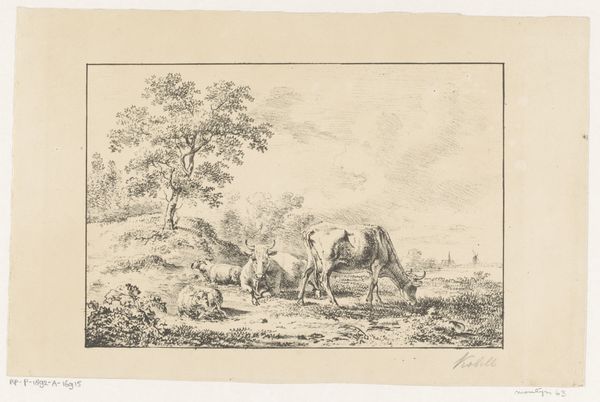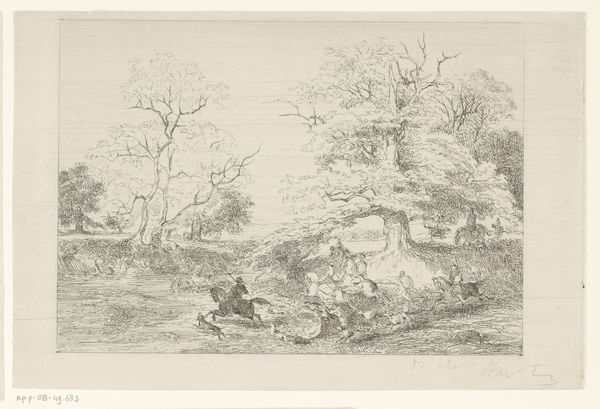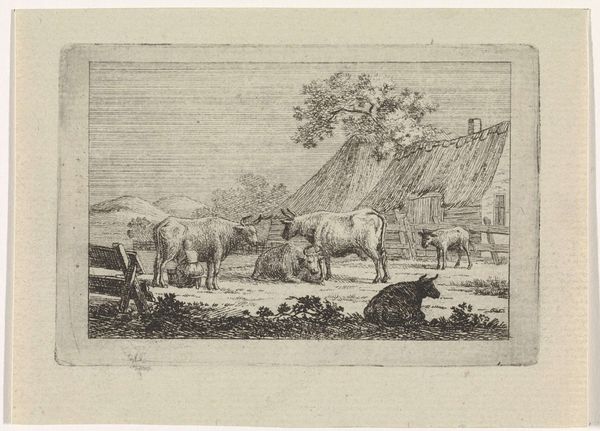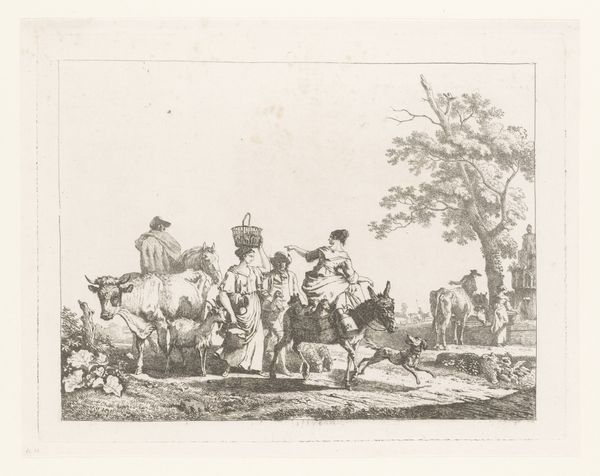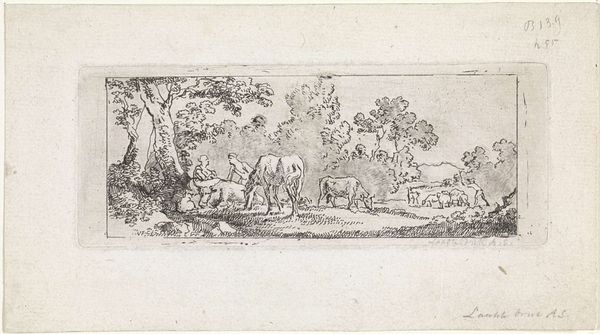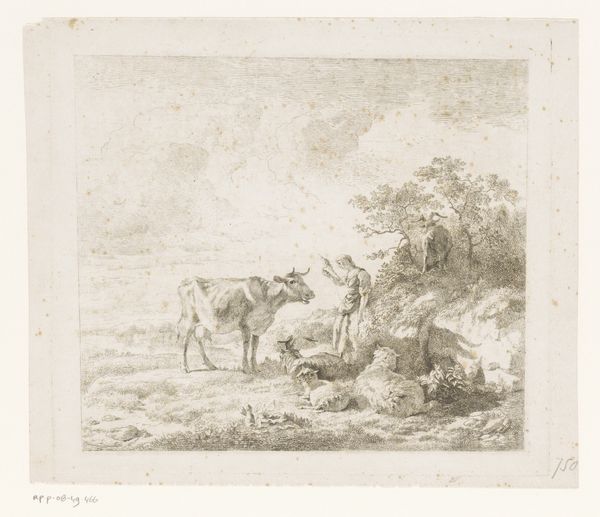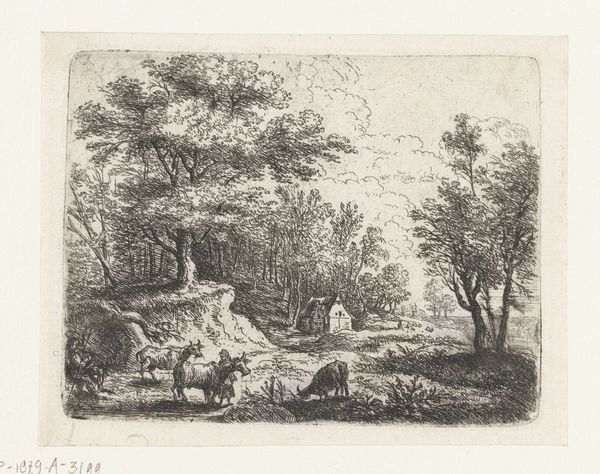
Dimensions: height 197 mm, width 247 mm
Copyright: Rijks Museum: Open Domain
Curator: Barend Hendrik Thier, a name perhaps not widely known today, crafted this delicate etching, "Herder met zijn kudde," or "Shepherd with his Flock," sometime between 1755 and 1811. What leaps out at you? Editor: Instantly, a feeling of gentle melancholy. The soft lines, the muted tones... it’s as if the scene is veiled in a nostalgic mist. And there’s a compositional serenity, despite the ruined architectural backdrop. Curator: Indeed. The ruins certainly speak to the Romantic sensibilities that were blossoming at the time. Notice how the artist uses the ink to create subtle tonal gradations, a real masterclass in creating depth. Editor: I am immediately drawn to how Thier presents the shepherd himself. Perched on a rise, a slender figure gazing outward—what narrative function would you ascribe him? Curator: The shepherd almost blends into the landscape, he seems pensive, connected—perhaps overwhelmed even—by nature. This reflects Romanticism's broader interest in humanity's relationship with the natural world, finding sublimity but also fragility. But look closer still at the detailing: that shepherd’s crook, the way he renders wool, and even the individual leaves on the trees—what stories do the details suggest? Editor: The material texture seems deliberately downplayed for atmospheric effect, for example, and he avoids sharp contours. The ink seems applied with light stippling techniques? I notice what appear to be botanical illustrations, or more to the point their influence here, as it shapes his sensitivity to rendering leaf forms and ground-level vegetation. Curator: Precisely, and that attention invites a slower, deeper looking; one which allows us to step out of the bustle and grind, maybe allowing a few simple considerations in a different space than the everyday. It all brings an arcadian past to the surface. I'm wondering: what would it be to lie there for a week with the dog, the sheep and the shepherd—what might we learn? Editor: It reminds us to contemplate moments of stillness in our own lives—or seek them out, if we haven't already. Perhaps it's that opportunity to still and watch that Thier offers the contemporary viewer? Thank you for elucidating this for me.
Comments
No comments
Be the first to comment and join the conversation on the ultimate creative platform.


